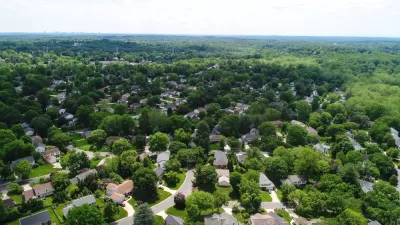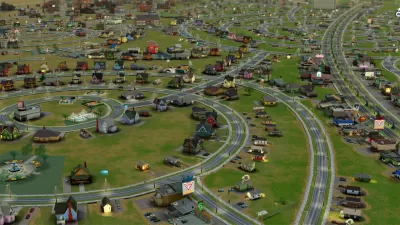The state of Virginia’s decision to limit the use of cul-de-sacs in residential subdivisions(1) will no doubt create a torrent of commentary, both pro and con. In the residential context, cul-de-sacs do have certain advantages: they limit traffic near homes, thus allegedly creating quieter environments for homeowners. So perhaps there is a case for the residential cul-de-sac. But in a commercial setting, the cul-de-sac may be the "right thing in the wrong place--such as a pig in a parlor instead of a barnyard.”(2) In such settings, the cul-de-sac has the same disadvantages as the residential cul-de-sac, with few of the advantages.
The state of Virginia's decision to limit the use of cul-de-sacs in residential subdivisions(1) will no doubt create a torrent of commentary, both pro and con. In the residential context, cul-de-sacs do have certain advantages: they limit traffic near homes, thus allegedly creating quieter environments for homeowners. So perhaps there is a case for the residential cul-de-sac.
But in a commercial setting, the cul-de-sac may be the "right thing in the wrong place--such as a pig in a parlor instead of a barnyard."(2) In such settings, the cul-de-sac has the same disadvantages as the residential cul-de-sac, with few of the advantages.
I work in an office park that is infested with small cul-de-sacs (3) and is cut off from all streets to the east by an interstate highway. As a result, students and employees of my 1500-student law school and of numerous nearby institutions all crowd one street that is the major means of going east or south - which in turn means that during rush hour, this street is so clogged that it can take fifteen or twenty minutes to drive a mile. This example suggests that a disconnected muddle of office-park streets is as inconvenient for drivers as for pedestrians.
None of the traditional rationales for cul-de-sacs justify this sort of layout. Residential cul-de-sacs benefit from low levels of traffic- but a building with hundreds of employees by definition will have lots of traffic nearby, and businesses inhabiting such buildings crave exposure as well as privacy. Denizens of residential cul-de-sacs claim that children can play more easily near their houses - but there are no children playing near most office parks.
The answer to this problem is simple: streets that are lined with offices instead of houses should be on a grid. Period.

Trump Administration Could Effectively End Housing Voucher Program
Federal officials are eyeing major cuts to the Section 8 program that helps millions of low-income households pay rent.

Planetizen Federal Action Tracker
A weekly monitor of how Trump’s orders and actions are impacting planners and planning in America.

Ken Jennings Launches Transit Web Series
The Jeopardy champ wants you to ride public transit.

Crime Continues to Drop on Philly, San Francisco Transit Systems
SEPTA and BART both saw significant declines in violent crime in the first quarter of 2025.

How South LA Green Spaces Power Community Health and Hope
Green spaces like South L.A. Wetlands Park are helping South Los Angeles residents promote healthy lifestyles, build community, and advocate for improvements that reflect local needs in historically underserved neighborhoods.

Sacramento Plans ‘Quick-Build’ Road Safety Projects
The city wants to accelerate small-scale safety improvements that use low-cost equipment to make an impact at dangerous intersections.
Urban Design for Planners 1: Software Tools
This six-course series explores essential urban design concepts using open source software and equips planners with the tools they need to participate fully in the urban design process.
Planning for Universal Design
Learn the tools for implementing Universal Design in planning regulations.
Heyer Gruel & Associates PA
Ada County Highway District
Institute for Housing and Urban Development Studies (IHS)
City of Grandview
Harvard GSD Executive Education
Toledo-Lucas County Plan Commissions
Salt Lake City
NYU Wagner Graduate School of Public Service





























